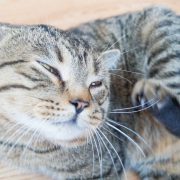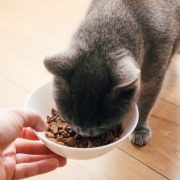Transient restrictive cardiomyopathy in cats: first reported case series
Transient restrictive cardiomyopathy in cats: first reported case series

Open access
In our edition of: Aug 2025
In our categories of: small animals
our summary:
Poissonnier, C. et al. (2025) Transient restrictive cardiomyopathy in cats: first reported case series. Frontiers in Veterinary Science, 12.
The aim of this retrospective case series was to describe the historical, epidemiological, clinical, diagnostic, and outcomes of cats with transient restrictive cardiomyopathy (TRCM).
The study reviewed the medical and echocardiographic databases of six cardiology referral centres in France from 2005 to 2024, for cats diagnosed with restrictive cardiomyopathy (RCM) for which follow-up revealed either disappearance or persistence of the RCM phenotype. All echocardiographic data was reviewed by an ECVIM-CA board-certified veterinary cardiologist.
For analysis cases were split into two groups: 17 cats whose follow-up confirmed the disappearance of RCM characteristics (i.e. normalisation of the left atrium (LA) or biatrial size with persistent normal left ventricular (LV) dimensions) were placed in the TRCM group, and 16 cats whose second examination confirmed either the worsening or persistence of the RCM phenotype formed a comparator group. Exclusion criteria included the presence of systemic diseases known to affect cardiovascular health. Cats suffering from the endomyocardial form of RCM, from other types of cardiomyopathy phenotypes, with systolic anterior motion of the mitral valve, and equivocal cardiac diagnoses were also excluded.
Results showed that cats in the TRCM group were significantly younger than those in the comparator group. The TRCM group had a higher incidence of antecedent events: 11 of the 17 cats in the group had a history of either medical interventions or infectious events in the previous 17 days, while no antecedent event was reported for any of the comparator group cats. The TRCM group had a significantly lower end-diastolic LA:Ao ratio and maximum LA diameter at diagnosis, and a significantly higher LV shortening fraction at diagnosis.
Diuretic treatment prescribed for congestive heart failure was discontinued (10/17) or decreased (7/17) in all TRCM cats, but not for any of the comparator group cats. Of the 17 cats in the TRCM group, two died of cardiac causes, while six of the 16 comparator l group cats died of cardiac causes during the follow-up period.
In the TRCM group, the median time from the RCM diagnosis to evidence of its echocardiographic resolution was 156 days. The median survival time for the comparator group was 667 days.
Limitations of this study include the risk that some TRCM cats with a relatively slow cardiac recovery were included in the comparator group, the retrospective nature of the study, and the small group sizes.
This study provides some evidence that TRCM can be considered as a differential diagnosis in cats presenting with an RCM phenotype, particularly in young cats presenting with a clear antecedent event, and that these cats should be monitored following diagnosis, which could include the use of cardiac troponin I as well as repeated echocardiography, for evidence of resolution.
The following may also be of interest:
Luis Fuentes, V. et al. (2020) ACVIM consensus statement guidelines for the classification, diagnosis, and management of cardiomyopathies in cats. Journal of Veterinary Internal Medicine, 34 (3), pp. 1062–1077. https://doi.org/10.1111/jvim.15745
inFOCUS: Subcutaneous furosemide therapy for chronic management of refractory congestive heart failure in dogs and cats RCVS Knowledge] [online] Available from: https://infocus.rcvsknowledge.org/subcutaneous-furosemide-therapy-for-chronic-management-of-refractory-congestive-heart-failure-in-dogs-and-cats/ [Accessed 24 August 2025]
Claiming CPD for reading inFOCUS articles
Reading and reflecting on articles can count towards your CPD, and we have a template to help you with the process.
Image copyright attribute: sir270





Leave a Reply
Want to join the discussion?Feel free to contribute!